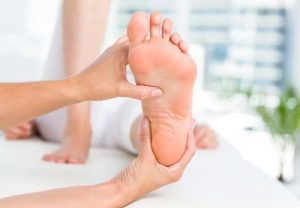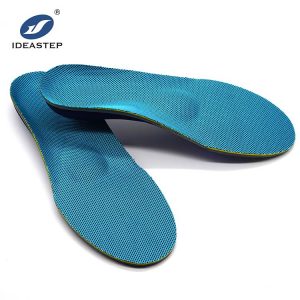FOR NURSES, 4 FOOT HEALTH TIPS
This blog article is dedicated to the nurses who care for us all when we are sick and in need. National Nurses Week begins today and ends on Florence Nightingale’s birthday, the foundation of modern nursing.
Nursing is a tough career under normal conditions, but it has recently become considerably more so. Nurses have a reputation for putting others’ needs ahead of their own. Excessive weariness and personal health difficulties can result from a lack of self-care. When a nurse takes time to look after themselves, not only do they feel better, but so do their coworkers and patients. It’s not as simple as it sounds to strike a work-life balance while also serving as a nursing role model.
Nurses, as well as teachers, construction workers, hospitality workers, and anybody else who spends a lot of time on their feet, understand the physical toll that standing for long periods of time can have. If your job requires you to stand for long amounts of time without stopping, it can lead to a range of issues, especially if you have bad posture or wear shoes that don’t give enough support. Over time, these concerns might progress beyond tired feet to chronic foot pain and other illnesses like plantar fasciitis.
1. Make foot care a top priority
When standing, the same foot muscles are strained repeatedly due to continual pressure. When walking, however, the pressure on the foot varies to and from different regions because the same muscles aren’t operating all of the time. After a long shift, tired, achy feet are typical, but if feet pain in one specific region, it may signal a need for greater foot support.
Swelling of the feet and legs is a common side effect of working on your feet all day. Tamika Saunders, owner of Priority Feet in Grayson, Georgia, recommends that nurses bathe their feet in warm water with Epsom salt for 10 to 15 minutes after work to stretch tight muscles, which can reduce inflammation and pain. Although good foot care may appear to be a low priority in comparison to other daily tasks, nurses like Saunders have seen the consequences of ignoring this region of the body. “We learn to look after our eyes, teeth, and hypertension, but we rarely look after our feet until something severe happens,” she explained. “There are solutions to ease discomfort that we have become accustomed to coping with on a daily basis if nurses start focusing more on foot care.”

2. Maintain Blood Flow
Working in a standing position on a regular basis, according to the Canadian Center for Occupational Health and Safety (CCOHS), can cause not just weariness and lower back pain, but also other health issues such as aching feet, swollen legs, and varicose veins. These are common complaints among nurses whose occupations require them to stand for lengthy periods of time during a shift, and they are frequently alleviated by increased blood flow.
Wearing knee-high compression socks is a fantastic place to start to improve blood flow and reduce these issues. The compression of the socks pressurizes the veins, increasing blood flow. Nurses frequently wear 15-20 mmHG socks (millimeters of Mercury). Higher pressures can be painful, while lower pressures may not be enough to prevent edema. To put things in perspective, the average pair of pantyhose worn by women has an 8-10 mmHG rating. Nurses who use compression socks at the end of the day will feel better, have less edema in their lower limbs, and have a lower risk of developing varicose veins (Nurse.com).
When a shift is through, put your feet up and relax your body. Elevating feet at the end of a shift (or whenever possible) helps recycle blood that has accumulated in the lower legs and returns it to the heart and throughout the body, similar to compression stockings.
3. Pay special attention to footwear
Wearing high-quality, comfortable shoes is the most critical thing nurses can do to care for their feet out of all the things they can do (Pain Resource). When you’re wearing the correct shoes, even 12-hour shifts appear to fly by. Supportive footwear does more than merely keep your feet from becoming weary and hurting, as you may have discovered. The rest of the body, particularly the lower back, knees, and ankles, are also supported.
When you wear the improper shoes to work, you risk aggravating or causing new problems (i.e. fatigue, foot pain, back pain). Foot arches can be harmed by shoes that don’t give enough support, which might impact the back. Back pain can often be avoided with the use of a well-designed orthotic shoe insert that supports normal alignment.
FOR NURSES, 4 FOOT HEALTH TIPS
4. Take Active Measures
Every year, nurses should be fitted for new shoes or orthopedic insoles, with two pairs required to rotate between shifts. A nurse’s shoes and insoles will need to be replaced every 3-6 months because they are subjected to so much wear and tear. (EveryNurse.Org)
The finest orthotics for foot pain include cushioning to ease walking and standing pressures, as well as arch support to align the foot with the ankles, knees, hips, and back. Look for cushioned arch support insoles that will return energy to your feet with each step you take throughout your shift, regardless of how long it is.
Nurses who are in pain or exhaustion are likely to be less active and productive. Not only does morale suffer, but it may also result in missed time due to injury. Thankfully, there are treatments available today to lessen the impact of a stressful work environment on nurses’ feet. A good insole foot-bed can help relieve pressure and discomfort, and it can make a big difference in how your feet feel.
Arch Lifting Support with Adjustable Height
For nurses who are on their feet all day, proper foot alignment is crucial for reducing foot and joint pain as well as preventing future concerns. That’s why we developed SelectFlex insoles, which feature the world’s first totally adjustable arch that conforms to the contour of each individual foot. Most over-the-counter insoles are “one size fits all,” despite the fact that no two feet are equal. SelectFlex insoles have three adjustable arch height and comfort settings that dynamically realign feet, ankles, knees, hips, and lower back into ideal position for maximum comfort and support throughout the day. (Source: EHS Daily Advisor)

FOR NURSES, 4 FOOT HEALTH TIPS
These four suggestions provide an arsenal of pain-relieving and energy-renewing solutions for better feet. It’s lot simpler to keep up with call lights, doctor’s orders, tests, or crises when your feet are in good shape, and to get through long days on the job when your feet are in good shape. Nurses, if you take care of your feet, they will take care of you, allowing you to focus on everyone else.
